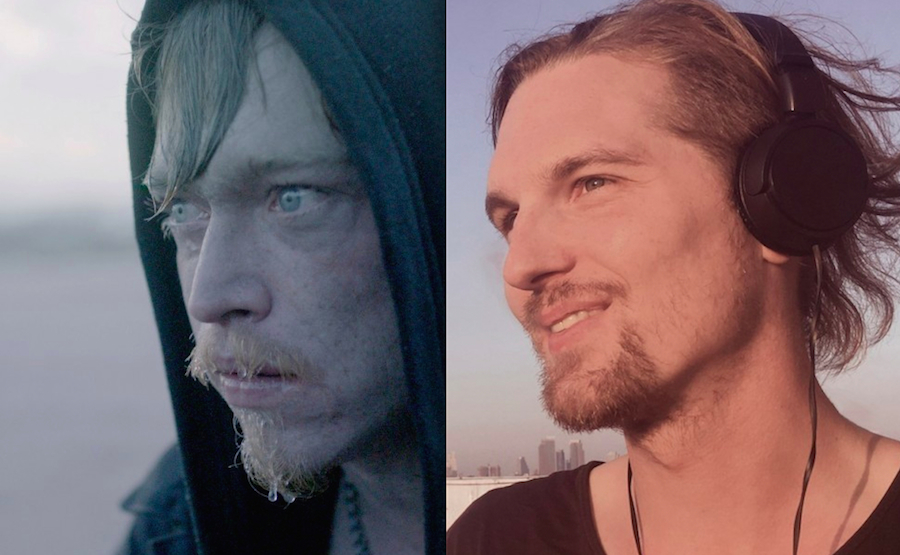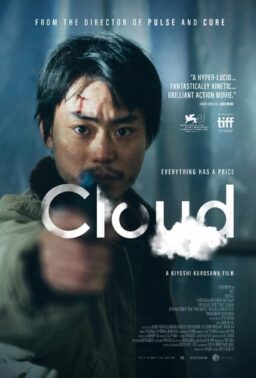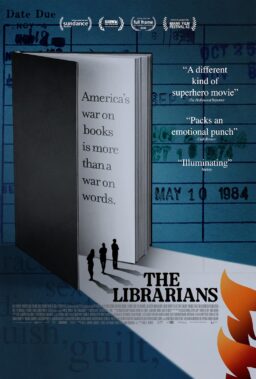Ten years after he gave Javier Bardem his shirt in “No Country for Old Men,” Caleb Landry Jones spent 2017 starring in four consecutive masterworks, and he was entirely different in each of them. From the kind goofball in “Three Billboards Outside Ebbing, Missouri” and the sinister brother in “Get Out” to the frustrated son in “The Florida Project” and the deeply unstable screw-up in “Twin Peaks: The Return,” Jones has quickly proven to be one of the most versatile talents in cinema today. With Peter Brunner’s “To the Night,” an operatically brutal drama that had its world premiere this week at the Karlovy Vary International Film Festival, Jones takes on the lead role and tackles every moment with ferocious intensity. He plays Norman, an artist traumatized by the childhood memories of his parents’ demise in a house fire. His volatile emotions have had a corrosive effect on his family—namely, his wife Penelope (Eleonore Hendricks) and their eight-month-old baby. As he retreats into his own world, Norman reconnects with his old pal, Andi (Christos Haas), whose eyesight is nearly gone, and recruits him to help resurrect the troubling events of his past.
Jones and Brunner took time to chat with RogerEbert.com at KVIFF about their love of Cassavetes, working with twins and the narration of the body.
Your film plays a bit like a collaboration between John Cassavetes and Hieronymus Bosch. To what extent to do see either of those artists reflected in the work?
Peter Brunner (PB): What’s interesting to me is that Bosch himself saw, as a child, a huge fire and it influenced him very much. I came home from primary school when I was a child and we had this huge Bosch book. I loved to look at these things, particular the depictions of Hell. I always felt for the people and wondered how they felt in the flames. There was a sexual aspect to the imagery as well. This world influenced me and has stayed with me. It served as an inspiration for Norman’s artworks.
Caleb Landry Jones (CLJ): Peter gave me a Bosch book, and I had never seen his work before. Well, actually I had, but I thought it was Dalí. I thought they were one in the same, just because of the panel with the cut-up body and all the strings and ladders. I was like, “Okay, this must be Dalí.”
PB: Dalí must’ve taken from it.
CLJ: I can’t tell you how many incredible things Peter had for me to reference while preparing to play the character of Norman, and this was one of them. I also got to make a book, like the one in the movie, where you see the scribbling of “To the Night,” and the drawing of Andi in it. He gave me a notebook along with certain things that he thought I would be using to make these collages and whatnot. Some of them were in the film, but I really got to take everything that he had given me as far as music, paintings, writers—and allowed myself to come at them all on my own, digest them and discover their importance for Norman.
PB: As far as Cassavetes is concerned, I think everyone who loves actors has to love his movies. I cannot really help the actors onset, I only can create an atmosphere, and that is what he did so well. He’s such an inspiration.
CLJ: Some people really hate Cassavetes, though. I’ve talked to some people that just can’t get behind his work. They’ll be like, [in deep voice] “As an actor, I like him, but his movies are shit,” and I’m like, “All of them? Every single one?” And they’ll be like, “‘Gloria’ might not have been so bad, but…” [laughs] I remember watching the beginning of “Shadows” and I absolutely hated the film. I thought it was juvenile and horrible and thought, “If this is independent cinema, then it is abysmal.” I literally watched about fifteen minutes of it. Then Peter showed me and the other actors “Love Streams” during the month before we shot “To the Night.” He only showed a bit of it to us. Everyone went to sleep after that, but I watched the rest of it, and that made me want to find everything that the man had done.
I still haven’t re-watched “Shadows” and I don’t know if I ever will. I saw “Faces,” and it did a similar thing where the first ten minutes plays around with this kind of kitschy reality, and you don’t buy into it until Gena is in the apartment with the two guys. About five minutes into this scene, it escalates to a point to where now it must be real, or this must be really happening. But it takes that ten minutes of him screwing around with you. The guy walks underneath a sign that says, “Fool,” and there are all sorts of little jokes like that. He was very important to this film, because of the way he worked with actors. His vigor and his “F—k Television” stance. He’s like Jesus coming to church and seeing everyone selling stuff, so he throws over the tables. “Husbands” was an important film for me. I think it’s one of his best.
PB: It’s just crazy that he directed and acted in “Husbands” and the set was so free, as you see in the behind the scenes footage. The symbiosis of an internal imbalance and an exterior imbalance in the relationship between Andi and Norman was inspired somewhat by Cassavetes. They are like surrogates to each other.
CLJ: It was so great that Christos and I got to spend so much time together. A lot of stuff worked out that maybe shouldn’t have. It was Christos’ first time in New York City.
PB: He was sitting in a cafe in New York, and Caleb knew that Christos was there. This was before they had met, and Caleb was so excited to introduce himself. So he took a guitar and started singing Kurt Cobain songs. Christos is blind, and he began looking toward the window. He was very drawn to the music. Suddenly Caleb entered the cafe and they threw him out.
CLJ: I was singing really loud.
PB: Christos didn’t know that this was the actor he was going to be working with, and it was a beautiful way for Caleb to introduce his character to Christos. It’s the sort of situation that Norman might create. Caleb immediately came up to him afterwards and was his normal himself. This was all an intuitive decision by Caleb, and it was so cool.
CLJ: In a way, it felt like Cassavetes was telling us, “Just keep doing what you’re doing. We were doing it too.” We were very fortunate that a lot of things just naturally and organically happened.
So much of the story is told through Caleb’s physicality, a technique Peter has referred to as “the narration of the body.”
PB: Thank you for recognizing that. It’s very important to us. The film does not tell a linear story. If you go with a blueprint of a story and make sure to hit all these specific points, you can ruin the film if you hang onto these things. This film was very much an introspective declaration of a character. Norman is not a person who uses words so much to intellectualize things. He is someone who has to experience it and live it through the body.
CLB: I saw a lady yesterday near the sand sculpture in town of a guy who looks a little like Teddy Roosevelt. A woman stood there looking at it, and then touched it with her hands. Then she took her foot and put it on the sculpture. I was very angry at her in my mind. But I think I also have a bit of that need to physicalize what I’m going through. [drums fingers on the table]

PB: With cinema, it is really possible to share with an audience a physical exploration of a condition. This is what we tried to do because the narration of the body is so important. A hundred years ago, we had to use the smell, the ears, the eyes and all of the senses to know certain things, such as whether a particular room is poisonous. Today, there is a huge depersonalization with technology. In cinema, it’s possible with a character study like this to bring audiences into a sensation of their physical reality.
The film plays like an abstract dance, such as when Norman becomes fused to a glass window in his parents’ burned out house. He feels so confined within himself that he can’t move.
CLJ: Glad that came across! You’re the first person that’s told me that, so that’s really nice to hear.
PB: That room with the windows is where the red thread is leading [in Norman’s model of the house].
CLJ: We were playing with the story of the minotaur trapped in the maze, needing to get out. There are some elements of that in the film.
What sort of research did you conduct, if any, into Norman’s form of PTSD?
PB: To us, Norman’s condition is a very individual, emotional imbalance that has arisen after having lost the anchor of his parents. A month or so prior to production, we watched a beautiful documentary called “Of Men and War,” about Iraq soldiers coming back home. After people returned from the second World War, there were no groups where you could share those experiences with others. This film very much allows us to see the process.
CLJ: But in the time leading up to the shoot, there were so many aspects of culture that Peter had given for me in relation to the character of Norman. “Of Men and War” was something that we watched together and spoke about. He really allowed me to take anything from what he showed me and apply it either consciously or subconsciously. That was a very important documentary in terms of getting me to understand the aspects of what I had thought I knew about Norman’s state of mind.
Eleonore Hendricks was Caleb’s co-star in the Safdie brothers’ excellent 2014 film, “Heaven Knows What.” It must’ve been exciting to collaborate with her again.
CLJ: I don’t think I’ve ever been happier to hear that another actor was going to work on a project. Peter was like, “If everything goes really well, we will have Eleonore as Penelope,” and we did. She is so amazing,
PB: I didn’t know her at all, until I saw a poster of her film “Nancy Please,” and I thought, “Who is this person?” Then I found her website. Because Penelope is a painter in the movie, I saw the photographs that Eleonore took and was struck by her dignity and humbleness to the people that she captured. I knew there was something so beautiful about the person who had taken them. Luckily our producer, Matt Parker from Loveless, knew her and they had previously worked together. I hadn’t seen “Heaven Knows What” before that.
That was the film where I first noticed Caleb and was like, “Who is this guy?”
CLJ: Just another guy in a wig. [laughs]
The closest spiritual cousin to Norman in your career that I can think of is Steven Burnett in “Twin Peaks: The Return.” Both men are psychologically and emotionally ravaged.
CLJ: I’ve been told not to talk too much about “Twin Peaks” at all, so I’m not going to if you don’t mind. I signed that contract that said, “Don’t talk about that.” It was an experience unlike any I’ve had, but I could say the same about working with Peter on this film. I asked Michael Cera about his experience making “Twin Peaks,” and he said, “I played an accountant,” and I was like, “Oh cool.” Then I saw his episode and was like, “That is not an accountant. That’s Wally!”
What inspired the gradual compression of the aspect ratio during especially tense moments?
PB: I have always very much loved films which are like spirals that you can go back to and in a way, you can find things again and again. Of course, with the films I’m making, I try to create spirals or loops where you can go back and find stuff. With this alternation of the aspect ratio, we tried to have different visual languages for different states and combine them as one introspective experience. I will refrain from explaining any more than that. I’ve often found that many people in the audience are so much smarter than yourself. You do these things intuitively, and what they create in the minds of audiences is so beautiful.
How did you go about staging the scene where Caleb hits Elonore while holding their baby?
PB: What we tried to have is an innocent treasure—a baby—in the middle of the movie, and that sequence is also filmed from his perspective. We were working with twins, and after four takes with one of them, the baby knew that when the door opened, a fight would begin, and it started screaming. They are very smart, even when they are eight months old. The twins’ mother is in the film as well—she is seen giving the IV to Christos—and she was such a warm and beautiful presence. She was always there onset and helped us maneuver everything. It was a big team effort and so difficult with a baby.
CLJ: The father and the grandfather also helped us so much. And we were in a f—king warehouse. It’s not exactly warm or nice. We’ve had our one area in the whole floor of the warehouse where it’s set up as the apartment, but other than that, it was empty warehouse. Not the best place for babies.
PB: And with twins, when one starts to cry, even if the other is far away, it’s like a sample delay. You hear, “Waah,” and suddenly there’s another, “Waaah…” It was crazy.
CLJ: But they were so wonderful. I felt very guilty many times. It was difficult to know where that line was between what was okay and not okay. Eleonore can beat me up all she wants to, that’s fine. But with a baby, it’s a whole other story…
PB: In that scene, you can observe the action from all the different angles. Norman isn’t hitting her because he’s a vicious a—hole, he wants to protect the baby. In a way, the baby is experiencing a traumatic situation that Norman may have experienced during the fire. Penelope is also trying to protect the baby and save the relationship. If you look at the film closely, you can see that it makes sense from all of the characters’ points of view, and that is what we tried to do with building up characters who are real and have many layers.
CLJ: When I come up to the place where my wife’s friend Caty lives, and Penelope comes out while Caty brings the baby, I understand where each of the characters are coming from. I understand why Caty is bringing the baby out and is very direct about it. She’s saying, “Look at what you are doing. F—k you.” No one is right and at the same time, their actions make sense. I think that is really special.
I was so moved by how Red Welby, Caleb’s character in “Three Billboards,” could be thrown out of a window by Sam Rockwell’s cop, Dixon, and still find a way to forgive him.
CLJ: Martin McDonagh wrote a great script as I think he probably always does, and I couldn’t believe when I got to that part in the script where Welby does this after all that has happened. Yet human beings are capable of actions like these even though the world says otherwise. The heart that happens to exist in this young man is big, and he has a really beautiful opportunity to show that. Of course, I wanted to play the scene much angrier, but that would’ve missed the whole point. We shot that scene of Dixon throwing Red out the window about six or seven times. We had a great crew, a great Stedicam operator and a great stuntman named John. He rolled down into a truck, and the truck pulled away.
PB: To execute a Stedicam shot like that is very difficult. I really liked all the little moments for Sam Rockwell’s character that you see within that scene.
What has been your favorite thing about this festival?
PB: It’s the courage of the decisions made by the festival team that I value. They want to share a spectrum of cinema that is demanding and difficult and they trust an audience to see these films. People here are so passionate about movies that they camp out in front of the cinemas. It’s all about the movies and not about—
CLJ: The bulls—t and the caviar. Yesterday, Eleonore and I met a young girl who was about 15. She thanked us for the film, asked if she could get a picture us, and said that the film made her cry. She was very shaky and it was clear that the film had effected her. I don’t know what she took away from the movie exactly, but I sensed something hopeful in her expression. Eleonore and I were both like, “F—k yes. This is why we did everything.”












